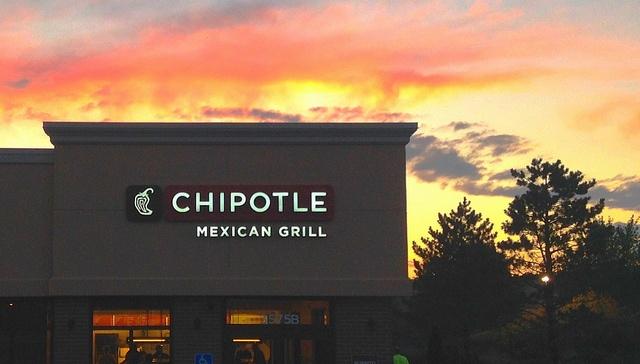
Chipotle Mexican Grill announced this week that it will stop using genetically modified ingredients. That includes its Asian restaurant concept, ShopHouse Southeast Asian Kitchen.
In 2013, Chipotle became the first national restaurant chain to voluntarily list genetically modified ingredients. That same year, it pledged to completely remove GMO ingredients.
Soybean oil was the company’s most common GMO ingredient. It was used to cook chips and taco shells and included in some recipes, including the adobo rub used for the grilled chicken and steak in those burritos. Both corn and flour tortillas also included some GMO ingredients. All corn-based GMO ingredients have been removed or replaced with non-GMO versions, and soy-based ingredients have been replaced with alternatives such as sunflower oil.
The transition to non-GMO ingredients has not been a costly one for Chipotle. Neither has it resulted in increased prices. Or, as the company said in a statement, “Chipotle’s move to non-GMO ingredients did not result in significantly higher ingredient costs for the company, and it did not raise prices resulting from its move to non-GMO ingredients.”
Some beverages still include GMO ingredients, including those with corn syrup which usually is derived from GMO corn. Some meat and dairy served at Chipotle comes from animals fed feed that is GMO. The company is “working hard on this challenge,” and points out that it has made “substantial progress.” Many restaurants serve 100 percent grass-fed beef.
Why remove GMOs
Chipotle lists the reasons for the decision on its website:
Scientists are still studying the long term implications of GMOs.
The majority of research studies showing GMOs to be safe for human consumption were funded by companies that sell GMO seeds. Few of these studies evaluate long-term effects, and there is a need for more independent studies.
While the companies that make GMO seeds claim they are considered to be safe, some in the scientific community don’t agree. In October 2013, a group of about 300 scientists from around the world signed a statement rejecting the claim that a scientific consensus on the safety of GMOs for human consumption. “We strongly reject claims by GM seed developers and some scientists, commentators, and journalists that there is a ‘scientific consensus’ on GMO safety and that the debate on this topic is over,” the scientists declared in the statement.
GMOs can cause environmental damage.
While those who make GMO seeds claim that their cultivation results in less herbicides and pesticides used, a study by researchers at Washington State University indicates the opposite is true. The researchers estimated that between 1996 and 2011 pesticide and herbicide use increased by over 400 million pounds as a result of GMO cultivation.
The herbicide glyphosate may be carcinogenic.
The International Agency for Research on Cancer (IARC), the specialized cancer agency of the World Health Organization, recently designated glyphosate as “probably carcinogenic to humans.” Glyphosate is an herbicide many GMO seeds are engineered to tolerate. More than 9 percent of the land in the U.S, is planted with crops engineered for glyphosate resistance.
With a change that was apparently as easily said as done, how long will it take for other fast-casual chains to follow suit?
Image credit: Mike Mozart

Gina-Marie is a freelance writer and journalist armed with a degree in journalism, and a passion for social justice, including the environment and sustainability. She writes for various websites, and has made the 75+ Environmentalists to Follow list by Mashable.com.














